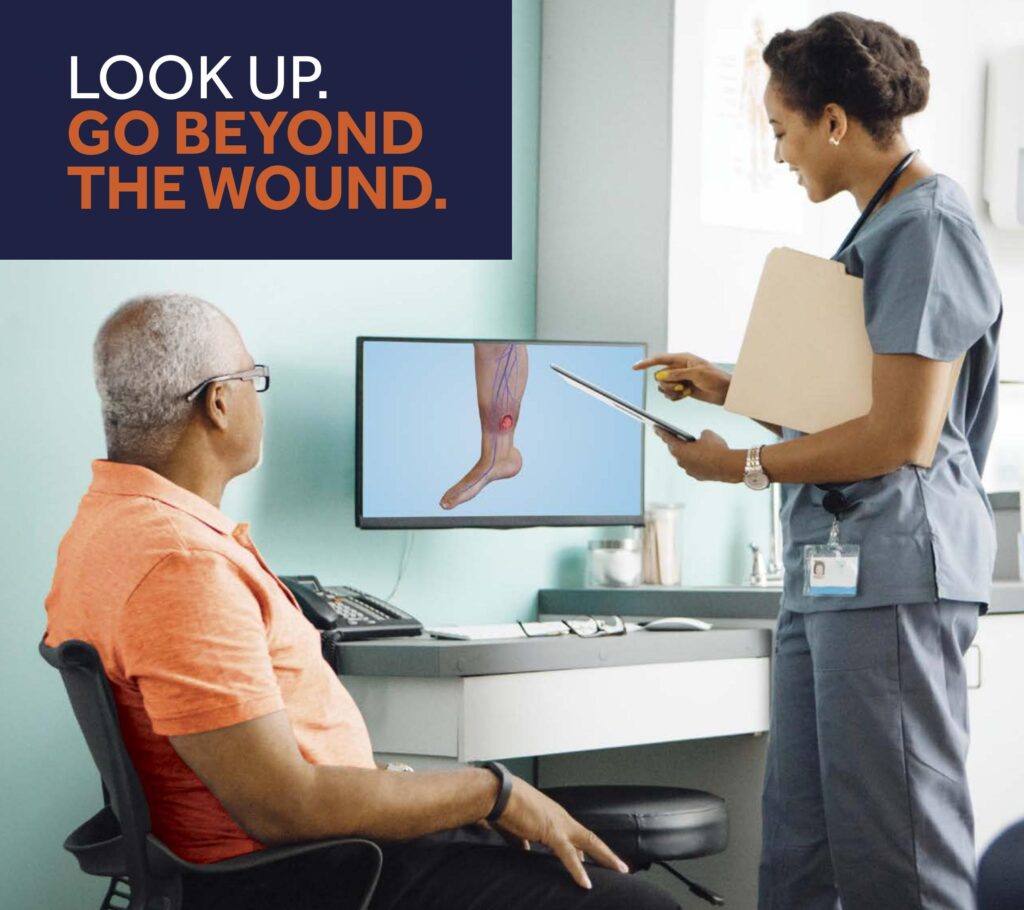Leg Ulcers
The presence of leg ulcers is the final and most advanced stage of venous reflux disease. Venous ulcers occur when there’s a break in the skin on your leg, usually around the ankle.
The veins in the leg are not able to send blood back to the heart. This buildup of blood increases the pressure, causing the skin to weaken and makes it more difficult for a cut or scrape to heal.
A leg ulcer is an open sore or wound that develops on the skin of the leg, typically below the knee. It is a chronic condition that can be slow to heal and may recur. Leg ulcers can vary in size, shape, and severity.
Causes of Leg Ulcers
Leg ulcers can have several different causes. Here are some common causes of leg ulcers:
- Venous insufficiency: This is the most common cause of leg ulcers. Venous insufficiency occurs when the veins in the legs have difficulty pumping blood back to the heart. This leads to increased pressure in the veins, causing swelling and skin changes that can eventually result in ulcers.
- Arterial insufficiency: When there is inadequate blood supply to the legs due to arterial disease or blockages, it can lead to leg ulcers. Arterial insufficiency ulcers often occur on the feet, ankles, or lower legs. They are typically painful and have a punched-out appearance.
- Diabetes: People with diabetes are at risk of developing leg ulcers due to poor circulation, nerve damage (neuropathy), and impaired wound healing. Diabetic ulcers usually occur on the feet and can be slow to heal.
- Pressure ulcers: Prolonged pressure on an area of the skin can cause damage, leading to the formation of ulcers. These ulcers are often seen in individuals who are bedridden or use a wheelchair and may develop on the legs if pressure is not relieved regularly.
- Trauma or injury: Any significant injury or trauma to the legs, such as fractures, burns, or severe contusions, can result in an ulcer forming at the site of the injury. Poor wound healing or infection can contribute to the development of a chronic ulcer.
- Infections: Certain infections can cause leg ulcers, particularly in tropical or subtropical regions. Conditions like cellulitis, erysipelas, or necrotizing fasciitis can lead to skin breakdown and ulceration.
- Vasculitis: Vasculitis refers to inflammation of the blood vessels, which can disrupt blood flow and lead to ulcers. Different types of vasculitis, such as vasculitis associated with rheumatoid arthritis or systemic lupus erythematosus, can affect the legs and cause ulcers.
- Other causes: Less common causes of leg ulcers include autoimmune diseases, such as lupus or scleroderma, certain cancers, blood disorders like sickle cell anemia, and medications that impair wound healing.
It’s important to note that multiple factors can contribute to the development of leg ulcers, and sometimes, ulcers may have a combination of causes. If you have a leg ulcer or are concerned about one, it is recommended to book an appointment with us. We have multiple locations in Houston, Texas.
Treatment Options
A cornerstone of treatment for venous ulcer is the proper diagnosis and treatment of the underlying venous disorder. The underlying venous disorder can be treated by a combination of modalities (Radio Frequency Ablation, VenaSeal, Sclerotherapy).
